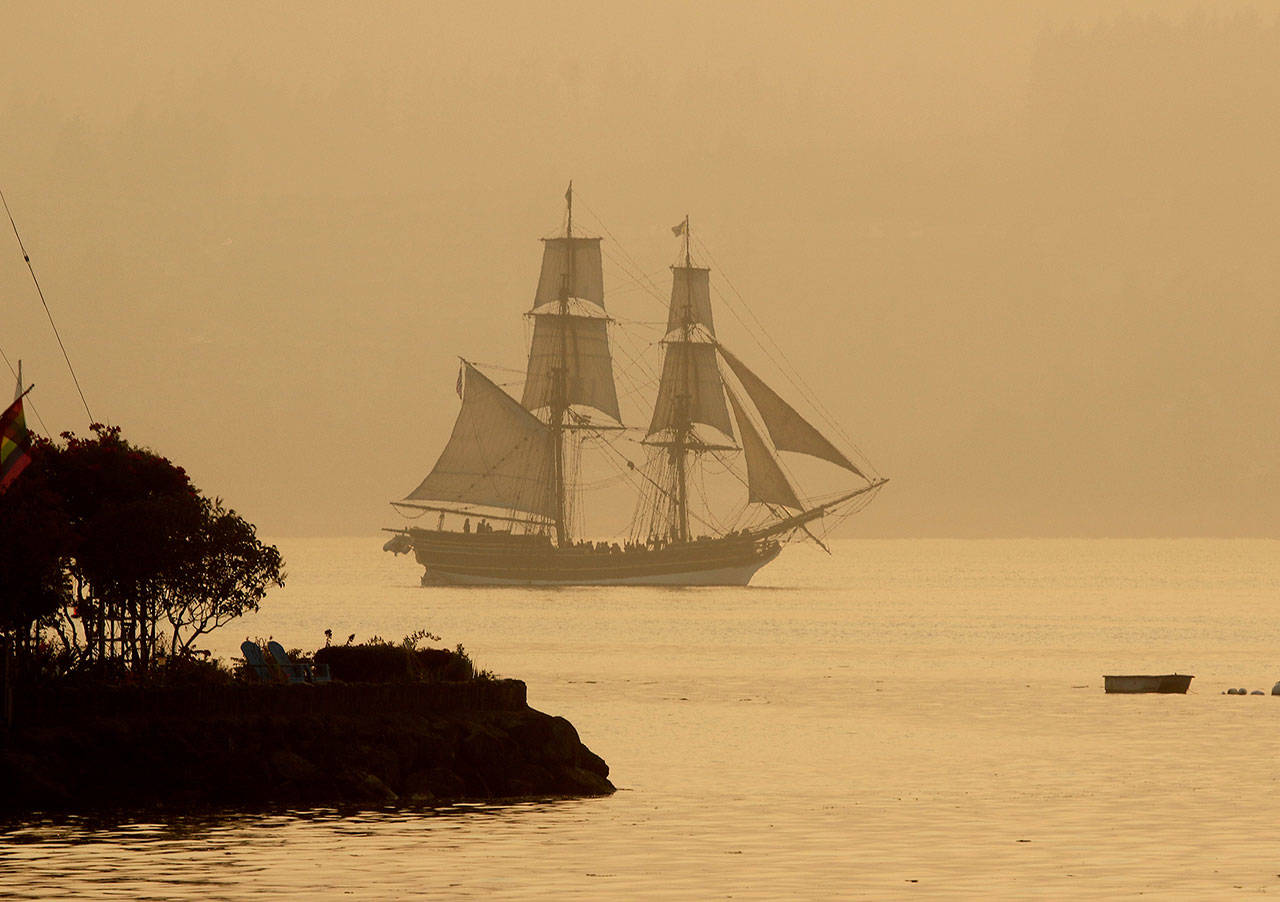By The Herald Editorial Board
Those stunning red sunsets are back. Unfortunately.
What has started in recent years with crimson-hued sunsets in Western Washington, degrades over late spring and summer months into smoke-choked air.
Smoke from more than two dozen fires in Alberta, Canada, is making its way southwest to Washington state, beginning with Eastern Washington. Right now, the smoke is staying at higher altitudes, Andrew Wineke, spokesman for the state Department of Ecology’s Air Quality Program, told the Spokesman-Review, Saturday. But that could change soon for all parts of the state.
Last August, the Puget Sound Clean Air Agency declared the smoke from wildfires “unhealthy” not just for sensitive groups — children, older adults, pregnant women and those with heart and lung issues — but for everyone, advising people to limit their time outdoors.
The fear this year, however, is that the smoke won’t waft here just from Canada, other Western states and Eastern Washington, but from Western Washington, itself.
Currently, the state Department of Natural Resources lists the wildfire danger in Western Washington as low, while most regions in Eastern Washington already are at moderate risk. But Western Washington’s dry spring, forecasts for a warm, dry summer and below-normal snowpack in the Cascade Range that’s quickly melting, have heightened concern that the region is at risk for drought and increased risk of wildfires.
Already, the DNR, which leads the state’s wildfire response, has fought more than 50 fires in the state; all but one was in Western Washington, the Skagit Valley Herald reported last month.
The National Interagency Coordinating Center’s predictive services staff have forecast above-normal wildfire potential for Western Washington beginning this month and continuing through September.
The seriousness of that threat is informed by the fires fought in recent years. In all, 350,000 acres of land burned last year, but that figure was down significantly from the record 1 million acres that burned in Washington state in 2015, along with the loss of three firefighters’ lives. Hillary Franz, Washington’s Public Lands commissioner, noted last year that her agency responded to more than 1,700 fires in 2018, but preparation and prevention efforts helped to keep the majority of those fires to less than 10 acres.
Recent fires have not gone unnoticed as state and national officials have responded with funding and changes in policy and procedure meant to limit the damage from wildfires even as the incidence of wildfires increase.
Congress last year established a contingency account with $2 billion in annual funding through 2027 that is intended to end the practice of borrowing money to fight fires from accounts budgeted for forest management, fuel reduction and other fire prevention work.
Earlier this spring, Franz and officials with the U.S. Forest Service signed a “Shared Stewardship” agreement intended to increase collaboration and coordination among state and federal agencies to reduce fuels on wildlands and improve forest health.
Franz, in her budget this year to the state Legislature, requested $55 million for operating and capital investments, including the hiring of additional firefighters and purchase of helicopters and other equipment. The Legislature thankfully funded $50 million of that request, but could have gone even further by passing legislation, requested by Franz and the DNR, that would have provided a dedicated source of revenue for wildfire prevention work, preparation and firefighting.
The legislation would have increased the tax on property and casualty insurance premium by about a half-percent, adding about $5 to $1,000 in premium costs paid by consumers. The increase would have provided $62.5 million annually for wildfire suppression and prevention. The bill passed out of the Senate’s Ways and Means committee in April, but did not advance, facing opposition from the insurance industry.
That’s a missed opportunity to provide a sustainable source of revenue — rather than responding after the fire — that would allow for advanced preparation and prevention work ahead of wildfire season, work that has been shown to limit the damage to public and private forestlands as well as losses to private property and communities.
State residents have a responsibility, too, as the danger of wildfire increases in coming weeks and months. Checking with local fire departments and other agencies on burn restrictions not only limits the danger from out-of-control fires but also can help with air quality. DNR has a full list of recommendations for those out in parks and wildlands and for homeowners who live in forested areas at www.dnr.wa.gov/WildfirePrevention.
With humans responsible for nearly 85 percent of wildland fires in the U.S. — from unattended campfires, burning of debris, discarded cigarettes and equipment use and malfunction — the greatest opportunity to limit the destruction and the smoke is up to us.
Talk to us
> Give us your news tips.
> Send us a letter to the editor.
> More Herald contact information.

























